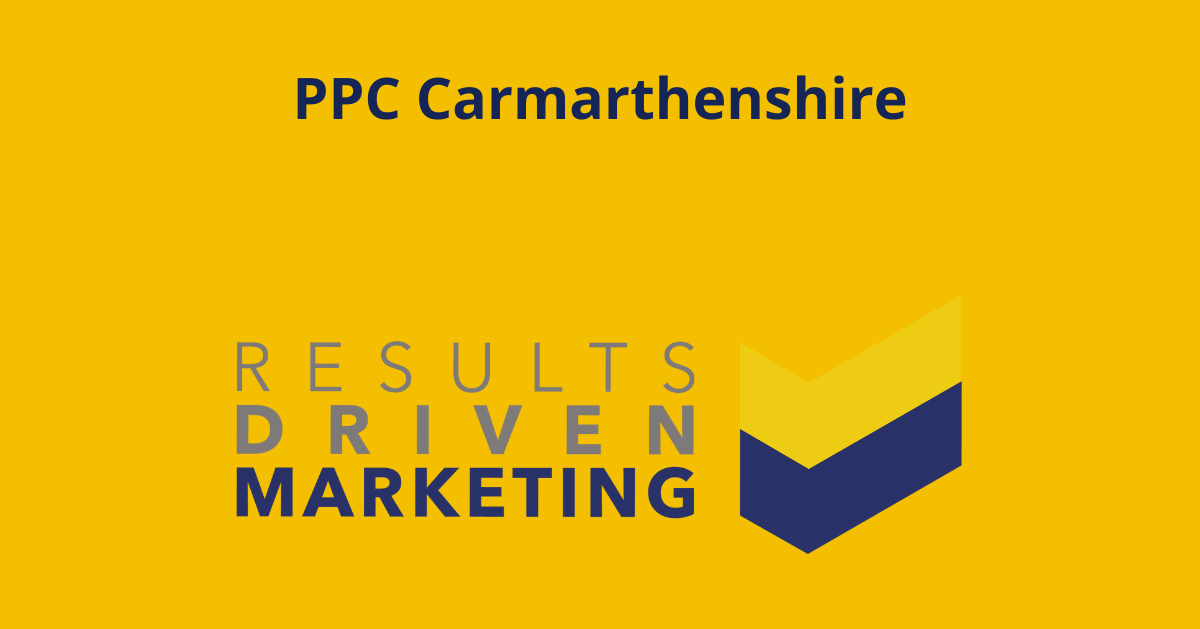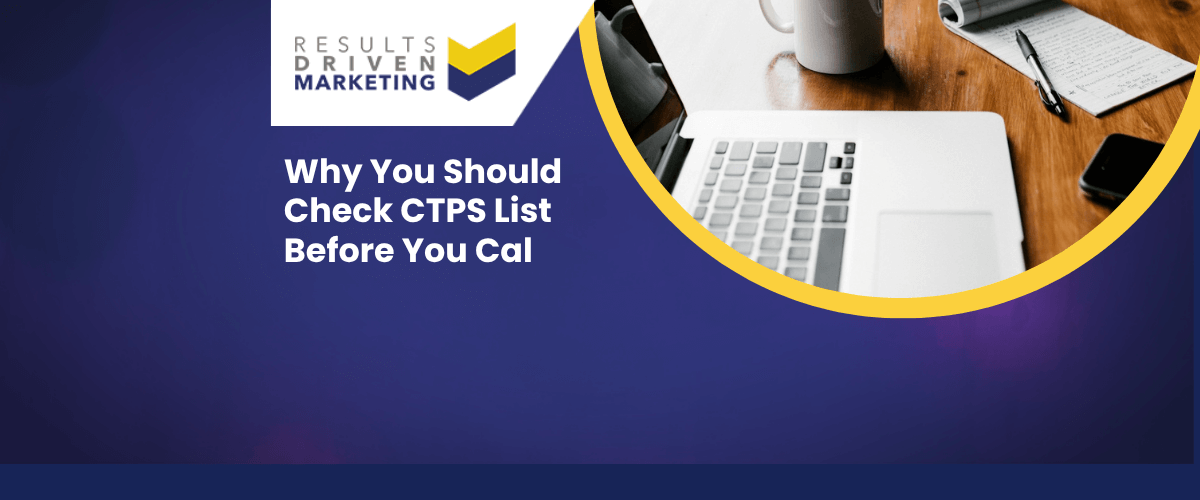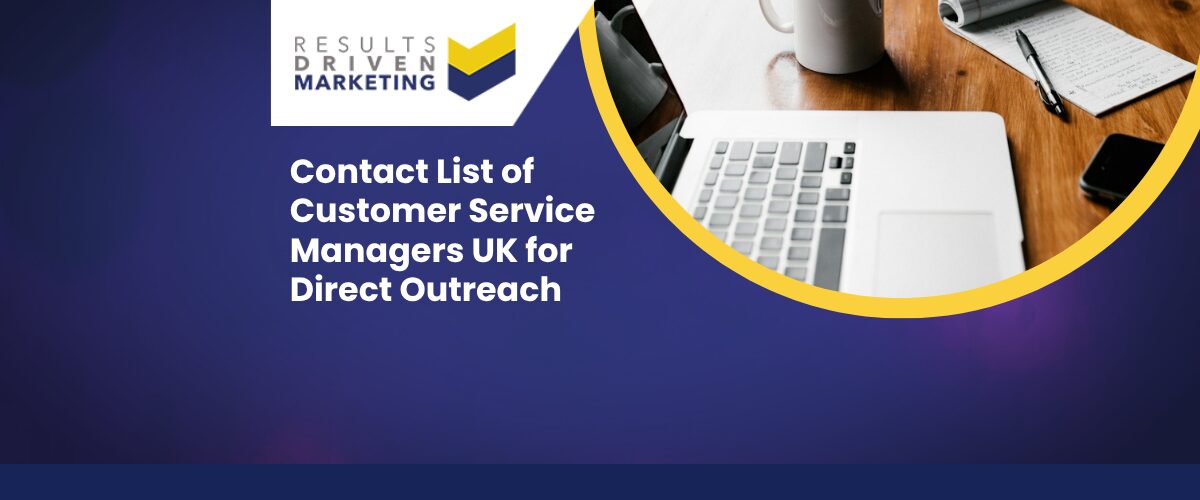
PPC Carmarthenshire
Our PPC Carmarthenshire Services have the potential to explode your business but in this article, we explore everything you need to know.
To get in touch with us –> Click Here <– and speak with our experts about how we help companies grow exponentially!
Introduction to PPC Carmarthenshire
In the digital age, where the internet has become the nexus of our global marketplace, the need for effective online advertising strategies has never been greater.
Among the pantheon of digital marketing tools, Pay-Per-Click (PPC) advertising stands as a remarkable and pivotal component.
In “The Complete Guide to PPC,” we will delve into the multifaceted world of PPC, encompassing its definition, historical background, and its undeniable importance in digital marketing.
Definition of PPC Carmarthenshire
Pay-Per-Click, or PPC, is a model of internet marketing where advertisers pay a fee each time one of their ads is clicked. Rather than earning visits organically, this strategy allows businesses to buy visits to their sites, effectively channelling more focused traffic to areas they find most valuable.
But what exactly is PPC, and how does it function? We will demystify the mechanics, strategies, and different platforms that encompass this versatile advertising approach.
Historical Background
The origins of PPC can be traced back to the early days of online advertising. Its growth and evolution parallel the development of the internet itself, from rudimentary banner ads to sophisticated, targeted campaigns that utilise complex algorithms.
Understanding the history of PPC provides insights into its current form, and this guide will lead readers on a journey through the significant milestones that have shaped this dynamic advertising model.
Importance in Digital Marketing
In an era where online presence is paramount for business success, PPC has emerged as a crucial part of the digital marketing toolkit. Its ability to target specific demographics, measure campaign performance, and deliver a high return on investment has made PPC an indispensable tool for businesses big and small.
We will explore why PPC is considered a cornerstone in modern marketing strategies and how it can be harnessed to achieve various business objectives.
As we embark on this comprehensive exploration of Pay-Per-Click advertising, readers can look forward to gaining a profound understanding of its intricacies, its historical roots, and its prominent role in today’s digital landscape.
Whether a seasoned marketer or a curious novice, “The Complete Guide to PPC” promises to be an insightful resource for all who seek to master this vital aspect of online advertising.
–> Click Here <– and get in touch to find out how we can help your business explode this year!
Understanding PPC Advertising Carmarthenshire
Pay-Per-Click (PPC) advertising has transformed the way businesses approach online marketing. With a plethora of options and customisable features, PPC has become a fundamental part of many successful digital marketing strategies.
In this section of “The Complete Guide to PPC,” we will dissect the mechanics of PPC advertising and explore the various types available, along with an essential component of the process: quality score and relevance.
How PPC Carmarthenshire Works
PPC is an advertising model where an advertiser pays a platform a predetermined fee each time a user clicks on their ad. Here’s a step-by-step breakdown of how it works:
Ad Creation: Advertisers create ads targeting specific keywords or audiences.
Bidding: They then bid on how much they are willing to pay for a click on their ads.
Display: Ads appear on search engines, social media, or other platforms when users search for those specific keywords or fall within the targeted audience.
Clicks and Conversion: When a user clicks on the ad, they are directed to a landing page where they may complete a desired action such as a purchase or signup.
Analysis and Optimisation: Advertisers analyse performance and make necessary adjustments to optimise future campaigns.
Types of PPC Carmarthenshire
PPC advertising is not monolithic and comes in several distinct types, each catering to different needs and goals:
Search Advertising: These are the text ads you see on search engine results pages (SERPs). Advertisers bid on specific keywords, and the ads are shown to users who search for those terms.
Display Advertising: Unlike text-based search advertising, display ads use visuals like images and videos. They are often seen on websites that are part of a network like Google’s Display Network and are more about building brand awareness.
Social Media Advertising: Platforms like Facebook, Instagram, and LinkedIn offer PPC advertising, allowing businesses to target users based on their social media activity, interests, and demographic information.
Remarketing: Also known as retargeting, this strategy involves showing ads to users who have previously interacted with a website but did not complete a desired action. Remarketing helps in recapturing potential customers.
Quality Score and Relevance
Quality Score is a metric used by search engines like Google to measure the relevance and quality of your ads, keywords, and landing pages. It affects the cost and positioning of your ads on the SERPs. A higher Quality Score usually leads to lower costs and better ad positions.
The Quality Score is determined by:
Click-Through Rate (CTR): The ratio of clicks to impressions.
Relevance of Keywords: How relevant your keywords are to the search queries.
Landing Page Quality: The relevance and user experience of the landing page.
Ad Relevance: How closely your ad matches the intent behind a user’s search.
Understanding PPC advertising requires a deep dive into its mechanisms, the different forms it can take, and the vital importance of Quality Score and relevance. By embracing these concepts, advertisers can craft more effective campaigns that resonate with their target audiences and ultimately achieve their marketing goals.
To get in touch and find out how we can take your lead generation to the next level –> Click Here <–
Setting Up a PPC Carmarthenshire Campaign
In “The Complete Guide to PPC,” one of the most crucial aspects to grasp is the process of setting up a PPC campaign. From defining clear goals to designing engaging landing pages, each step is integral to the overall success of the campaign.
Below, we will outline the key stages of setting up a PPC campaign and delve into the specifics that can make or break your advertising efforts.
Goals and Objectives
Before embarking on a PPC campaign, it is essential to define the goals and objectives you wish to achieve. Are you aiming to increase sales, brand awareness, or perhaps drive more traffic to your website?
Understanding your desired outcomes will guide your campaign’s direction, budget, and metrics to measure success.
Target Audience
Identifying your target audience is pivotal for creating a campaign that resonates. Consider factors like demographics, psychographics, interests, and online behaviour to create detailed audience personas.
This information helps in targeting your ads more effectively and efficiently, ensuring you reach the right people at the right time.
Keyword Research
Keyword research is the foundation of any successful PPC campaign, especially for search advertising. This stage involves:
Tools: Utilise tools like Google’s Keyword Planner, Moz’s Keyword Explorer, or SEMrush to identify high-performing keywords related to your industry and offerings. These tools provide insights into search volumes, competition, and estimated costs.
Strategies: Consider strategies like focusing on long-tail keywords that are more specific and often less competitive. Analyse competitor keywords and stay abreast of seasonal trends that may impact keyword performance.
Ad Creation
Crafting compelling ads is both an art and a science. Your ads should not only be visually appealing but also aligned with your chosen keywords and overall campaign goals.
Include strong calls to action (CTAs), highlight unique selling points, and maintain consistency with your brand’s tone and style.
Landing Page Design
A well-designed landing page can be the deciding factor in converting a click into a customer. Your landing page should be visually cohesive with the ad, offer a seamless user experience, and encourage the visitor to complete the desired action (e.g., making a purchase, signing up for a newsletter). Include clear CTAs, engaging content, and ensure the page loads quickly on all devices.
Conclusion
Setting up a PPC campaign is a multi-faceted process that requires careful planning, research, creativity, and attention to detail.
By aligning your campaign with well-defined goals and a deep understanding of your target audience, leveraging the right keywords, creating engaging ads, and optimising landing page design, you can pave the way for a successful PPC campaign.
This comprehensive approach ensures that each click is a step towards achieving your business objectives, maximising the return on your advertising investment.
PPC Carmarthenshire Bidding Strategies
Within the broader landscape of Pay-Per-Click (PPC) advertising, the concept of bidding plays a central role in determining how your ads are positioned and what you pay for them. The bidding strategy chosen can have significant implications for the success and efficiency of a campaign.
In this section of “The Complete Guide to PPC,” we will explore various PPC bidding strategies, focusing on Cost-per-Click (CPC), Cost-per-Mille (CPM), Cost-per-Acquisition (CPA), and comparing Automatic vs. Manual Bidding.
Cost-per-Click (CPC)
CPC is a common bidding strategy where you pay a specified amount each time a user clicks on your ad. This approach is particularly useful for campaigns focused on driving traffic to a website.
The primary goal here is to maximise clicks within a specific budget. Advertisers can set a maximum CPC bid to control costs while optimising for visibility.
Cost-per-Mille (CPM)
CPM, or Cost-per-Thousand Impressions, is a bidding strategy where you pay for every thousand times your ad is displayed, regardless of how many clicks it receives.
This approach is often favoured for brand awareness campaigns, where the main objective is to be seen by as many people as possible. Since clicks are not a consideration, CPM can be a more cost-effective option for increasing visibility.
Cost-per-Acquisition (CPA)
CPA bidding is designed around the conversion action you want users to take after clicking your ad, such as making a purchase or signing up for a newsletter.
With this strategy, you pay for each acquisition or conversion, rather than clicks or impressions. It’s an effective approach when your primary goal is driving specific user actions, as it directly aligns costs with results.
Automatic vs. Manual Bidding
These two methods represent different levels of control and involvement in the bidding process:
Automatic Bidding: Platforms like Google Ads offer automatic bidding options, where the system sets your bids to maximise results based on your campaign goals.
This can be a time-saver and may leverage machine learning to optimise performance. However, it offers less control over individual bid amounts.
Manual Bidding: With manual bidding, advertisers have complete control over how much they bid for each keyword or placement. This approach offers more granularity and allows for personalised strategies but can be time-consuming and requires ongoing monitoring and adjustments.
Conclusion
Choosing the right bidding strategy in PPC advertising is a nuanced decision that must align with the specific goals, target audience, and budget of a campaign.
Whether aiming to boost traffic with CPC, increase visibility with CPM, drive specific actions with CPA, or carefully balance control and efficiency through manual or automatic bidding, understanding these options empowers advertisers to tailor their approach for optimal success.
By aligning bidding strategies with broader campaign objectives, advertisers can ensure that every dollar spent is a strategic investment towards achieving their marketing goals.
Monitoring and Optimisation in PPC Carmarthenshire
Launching a Pay-Per-Click (PPC) campaign is just the beginning of the journey. The path to success lies in meticulous monitoring and continuous optimisation. By keeping a close eye on various aspects of your campaign and making necessary adjustments, you can ensure that your advertising efforts are not just effective but also efficient.
In this section of “The Complete Guide to PPC,” we will cover key aspects of monitoring and optimisation, including Analytics and Tracking, Performance Metrics, A/B Testing, and Ongoing Maintenance.
Analytics and Tracking
Analysing data and tracking key performance indicators (KPIs) are essential for understanding how your PPC campaign is performing. Modern advertising platforms offer detailed analytics, allowing you to:
Monitor Click-Through Rates: Understand how many people are clicking on your ads.
Track Conversions: See how many clicks are leading to desired actions such as sales or sign-ups.
Measure Return on Investment (ROI): Determine whether the money spent on the campaign is leading to profitable results.
Observe User Behaviour: Gain insights into how users interact with your landing pages and website.
Performance Metrics
Choosing the right performance metrics depends on your specific goals and objectives. Common metrics include:
Cost-Per-Click (CPC): Average cost paid for each click.
Click-Through Rate (CTR): Percentage of people who click on the ad after seeing it.
Conversion Rate: Percentage of clicks that result in a conversion.
Quality Score: Google’s rating of the quality and relevance of your keywords, ads, and landing pages.
Regularly reviewing these metrics provides a snapshot of your campaign’s health and areas where improvements can be made.
A/B Testing
A/B testing is a method of comparing two versions of a webpage or ad against each other to determine which one performs better. This process helps in:
Improving Ad Copy: By testing different headlines, CTAs, or visuals, you can find what resonates best with your audience.
Optimising Landing Pages: Experimenting with various design elements, content, and layouts helps in increasing conversion rates.
Enhancing User Experience: Discover what encourages better engagement and minimises bounce rates.
Ongoing Maintenance
PPC campaigns require continuous monitoring and adjustments to stay effective. Ongoing maintenance includes:
Ad Monitoring: Regularly review ads for performance and pause underperforming ones.
Keyword Adjustments: Add or remove keywords based on performance, and adjust bids as necessary.
Budget Management: Monitor spending and reallocate budget to high-performing ads or keywords.
Compliance Checks: Ensure that all ads comply with platform guidelines and legal regulations.
Conclusion
Monitoring and optimisation are dynamic and ongoing processes in a PPC campaign. Through diligent analysis, methodical testing, and consistent maintenance, advertisers can hone their campaigns to perfection.
By embracing these practices, you can not only meet your initial goals but uncover new opportunities and insights, driving further growth and efficiency. In a competitive digital landscape, staying on top of your PPC campaign’s performance is not just a recommendation; it’s a necessity for ongoing success.
–> Click Here <– and get in touch to find out how we can help your business explode this year!
Compliance and Best Practices in PPC Carmarthenshire
While the technical aspects of Pay-Per-Click (PPC) advertising are undoubtedly vital, adhering to compliance measures and best practices is equally crucial.
These considerations ensure that your campaigns not only reach their potential but do so in a manner that’s lawful, ethical, and in line with industry standards.
In this segment of “The Complete Guide to PPC,” we will explore the essential areas of compliance and best practices, focusing on Legal Considerations, Ethical Guidelines, and Industry Standards.
Legal Considerations
Navigating the legal landscape of PPC advertising can be complex, but compliance with these rules is non-negotiable. Key legal considerations include:
Intellectual Property Rights: Ensure that your ads don’t infringe on copyrights, trademarks, or patents. Using someone else’s intellectual property without permission could lead to legal action.
Privacy Regulations: Advertisers must adhere to privacy laws like the General Data Protection Regulation (GDPR) in Europe or the California Consumer Privacy Act (CCPA) in the U.S. This includes transparently handling user data and obtaining necessary consents.
Advertising Regulations: Different jurisdictions may have specific rules concerning advertising practices, such as truthfulness, disclosure of sponsored content, and targeting certain demographics (e.g., children).
Ethical Guidelines
Beyond legal obligations, ethical conduct in PPC advertising is pivotal for building trust and reputation. Key ethical guidelines include:
Transparency: Clearly label ads as such and disclose any affiliations or partnerships. Misleading users erodes trust and can damage your brand’s reputation.
Respectful Targeting: While targeting is a valuable tool, it must be used responsibly. Overly intrusive or inappropriate targeting can lead to user discomfort and backlash.
Avoiding Sensationalism: Misleading headlines or exaggerated claims may grab attention, but they can also lead to loss of credibility. Ensuring honesty and integrity in your messaging promotes lasting relationships with your audience.
Industry Standards
Adhering to recognised industry standards ensures that your campaigns meet the expectations of both platforms and audiences. Key standards to consider include:
Platform Guidelines: Each advertising platform (e.g., Google Ads, Facebook Ads) will have specific policies and guidelines. Non-compliance can lead to penalties or removal of ads.
Accessibility: Ensure that your ads and landing pages are accessible to all users, including those with disabilities. This not only broadens your reach but also aligns with inclusive practices.
Quality Assurance: Maintain high standards in ad copy, design, and landing page experience. Consistent quality fosters a positive brand image and enhances user engagement.
Conclusion
In the intricate world of PPC, compliance with legal considerations, ethical guidelines, and industry standards is not merely an afterthought but a core component of responsible and successful advertising.
By embedding these principles into every stage of your PPC campaign, you not only safeguard against potential legal pitfalls but also contribute to a more transparent, respectful, and high-quality digital advertising ecosystem.
Investing in compliance and best practices is an investment in the long-term success and reputation of your brand.
–> Click Here <– and get in touch to find out how we can help your business explode this year!
Common Mistakes in PPC Carmarthenshire and How to Avoid Them
Pay-Per-Click (PPC) advertising offers an efficient way to reach target audiences and drive conversions, but it’s not without its pitfalls. Even seasoned advertisers can fall victim to common mistakes that can hinder performance and waste budgets.
In this section of “The Complete Guide to PPC,” we’ll explore some of the most frequent errors in PPC campaigns and offer guidance on how to avoid them.
Ignoring Negative Keywords
Mistake: Failing to specify negative keywords can lead to irrelevant clicks that drain your budget without yielding conversions.
Solution: Regularly review search query reports to identify and add negative keywords that don’t align with your target audience. This will help you filter out irrelevant traffic and focus your budget on more promising prospects.
Lack of Ad Group Segmentation
Mistake: Grouping diverse keywords into a single ad group can lead to generic ad copy and lower relevance scores.
Solution: Segment keywords into tightly-themed ad groups. Create specific ads for each group to increase relevance and improve both Quality Score and user experience.
Neglecting Mobile Optimisation
Mistake: Failing to optimise ads and landing pages for mobile users can result in poor user experience and lost opportunities.
Solution: Ensure that both ads and landing pages are mobile-friendly. Consider using mobile-specific ad formats and ad extensions to enhance visibility and engagement.
Overlooking Ad Extensions
Mistake: Not utilising ad extensions reduces the information you can share within an ad, potentially decreasing its effectiveness.
Solution: Use relevant ad extensions to provide additional information, such as location, contact details, or special offers. This can enhance your ad’s appeal and provide more reasons for users to click.
Sending All Traffic to the Homepage
Mistake: Directing all ad clicks to your homepage rather than a relevant landing page can confuse visitors and reduce conversion rates.
Solution: Create dedicated landing pages that align with specific ads or ad groups. Ensure a cohesive message from ad to landing page to improve user flow and increase the likelihood of conversion.
Failure to Test and Iterate
Mistake: Sticking with a single ad variation or not regularly reviewing performance can lead to stagnation and missed opportunities for improvement.
Solution: Regularly A/B test different ad elements and continuously monitor performance metrics. Make data-driven adjustments and don’t be afraid to iterate to find what works best.
Ignoring Analytics and Attribution
Mistake: Not properly tracking or attributing conversions can lead to an unclear understanding of what’s driving success.
Solution: Implement proper tracking and attribution models to understand the customer journey and the impact of various touchpoints. This will guide more informed decision-making.
Conclusion
PPC advertising is a dynamic and complex field where small oversights can lead to significant challenges. By recognising these common mistakes and implementing the strategies to avoid them, you can build more effective and efficient campaigns.
Remember, success in PPC isn’t just about avoiding errors; it’s about continuous learning, testing, and refining your approach. Stay attentive to the ever-changing PPC landscape, and don’t hesitate to seek professional guidance or tools when needed.
By adopting a proactive and informed approach, you can turn potential pitfalls into stepping stones on your path to PPC success.
–> Click Here <– and get in touch to find out how we can help your business explode this year!
Future Trends and Predictions in PPC Carmarthenshire
As the digital landscape continues to evolve, the Pay-Per-Click (PPC) advertising arena is poised for transformation. Understanding where the industry is heading not only offers insights into future opportunities but helps in preparing for potential challenges.
In this final section of “The Complete Guide to PPC,” we’ll explore future trends and predictions in PPC, focusing on Emerging Technologies, Market Evolution, and Opportunities and Challenges.
Emerging Technologies
The introduction and adoption of new technologies continue to reshape the PPC landscape. Key technological trends include:
Artificial Intelligence (AI) and Machine Learning: These technologies are enhancing automated bidding, personalisation, and predictive analytics, allowing for more refined and responsive campaigns.
Voice Search: As voice assistants become more prevalent, optimising for voice search will become essential. Advertisers must adapt their keyword strategies and content to align with conversational queries.
Augmented Reality (AR) and Virtual Reality (VR): As immersive experiences grow in popularity, AR and VR could open new advertising avenues, offering interactive and engaging ad formats.
Market Evolution
The PPC market itself is undergoing significant changes, driven by shifts in consumer behaviour, regulatory landscapes, and competitive dynamics. Key evolutions include:
Increasing Competition: With more businesses leveraging PPC, the competition for keywords and ad placements is intensifying, potentially driving up costs.
Shifts in Platform Dominance: Emerging platforms and changes in user preferences may alter the balance of power among advertising platforms. Being agile and adaptable to new channels will be vital.
Privacy-Focused Changes: Growing concerns over privacy may lead to stricter regulations and changes in tracking capabilities, impacting targeting and analytics.
Opportunities and Challenges
These evolving trends present both exciting opportunities and potential challenges:
Opportunities:
Personalisation at Scale: Leveraging AI for hyper-targeted advertising offers the chance to connect with audiences on an unprecedented level.
Diversification of Channels: Exploring new platforms and ad formats can help reach untapped segments of your audience.
Sustainable Practices: Embracing ethical and environmentally friendly practices could become a unique selling point and align with consumer values.
Challenges:
Adapting to Technological Changes: Keeping up with rapid technological advancements requires ongoing learning and investment.
Regulatory Compliance: Navigating an increasingly complex regulatory environment will demand careful attention and adaptability.
Cost Management: As competition grows, managing costs while maintaining effectiveness will become more complex.
Conclusion
The future of PPC Carmarthenshire is a thrilling blend of technological innovation, market evolution, and a complex interplay of opportunities and challenges.
Embracing emerging technologies, staying abreast of market trends, and proactively engaging with both the possibilities and obstacles on the horizon will be key to thriving in this dynamic environment.
By positioning your PPC Carmarthenshire strategies with a forward-looking perspective, you can turn the uncertainties of the future into a roadmap for continued success and innovation.
Whether you’re a seasoned PPC Carmarthenshire expert or just beginning your journey, understanding these future directions is essential for staying ahead of the curve in the ever-changing world of digital advertising.
–> Click Here <– and get in touch to find out how we can help your business explode this year!





